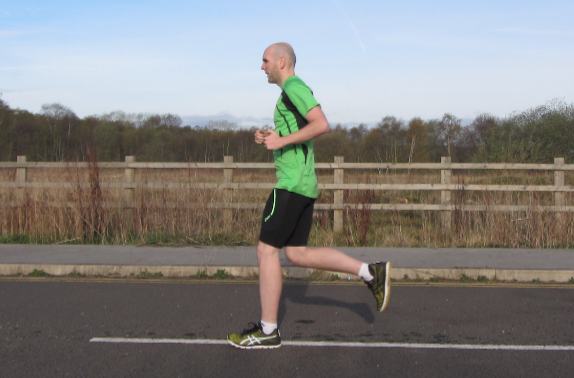
Blind Runner Creates App To Guide Him Through Marathons
Athletics can be a powerful element in an individual’s life. It can help create dreams and goals for someone to work toward. It can bring hope and progress. So when someone who falls in love with a sport but tragically becomes physically unable to continue… what happens? Some become distraught and heartbroken while others, like marathon-runner Simon Wheatcroft, work to find a way to continue to do what they love.
Wheatcroft was born with retinitis pigmentosa (RP), a genetic degenerative eye condition that causes a gradual decrease in his ability to see. By the time he was 17 he had become legally blind. Even so, this didn’t deter his dreams of completing races like the New York Marathon. “I was tired and in pain after the marathons, but I was also happy knowing I had achieved something that once seemed impossible, made possible thanks to technology,” said Simon.
During his everyday life, he has his dog Ascot to keep him company but he usually has another individual assisting him during races. So what happens when he wants to go on his own? Well, this is where his ideas and IBM Bluemix, an app development platform, come into play. Scott created the app eAscot (named after his dog) that will potentially help him navigate through the 155-mile ultra-marathon Sahara Race of the 4 Deserts Race series. The app will help Scott keep on track during the race by using satellite navigation that connects to his phone via Bluetooth. While he’s running, it will give high-pitch beeps if he starts going too far to the right and low pitch beeps when too far left.
“Being able to do something that had never been done before. To create an application in a matter of weeks that changed what was possible for visually impaired runners felt even better than completing any race,” said Scott.
There are numerous other creations that are helping those who are disabled continue to stay active. One is the use of 3D printing for those who compete in the Paralympics by creating racing wheelchairs and prosthetic limbs. Whether the individual was born with the physical disability or something happened during their life to cause it, prosthetics has established a way for them to continue on. An example is invention of the Paragolfer by South African-born professional golfer and US veteran, Anthony Netto, who was shot while on duty. The Paragolfer helps bring the golfer to a secure, standing position. “From tears of joy, to smiles from ear to ear, hugs and kisses for grateful heartfelt thank yous – I feel like I’ve made a real difference to people’s lives,” he said.
Technology has always been awe-inspiring and when combining it with sports, it can help create new and innovative way to keep people active and on a track to following their dreams.